2-Methyl-4-isothiazolin-3-one
Synonym(s):2-Methyl-3(2H)-isothiazolone
- CAS NO.:2682-20-4
- Empirical Formula: C4H5NOS
- Molecular Weight: 115.15
- MDL number: MFCD00013254
- EINECS: 220-239-6
- SAFETY DATA SHEET (SDS)
- Update Date: 2025-12-17 09:49:15
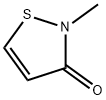
What is 2-Methyl-4-isothiazolin-3-one?
Description
Methylisothiazolinone (MI) is an isothiazolinone-derived biocide used for controlling microbial growth in industrial and household products, often in a mixture with 5-chloro-2-methyl-3-isothiazolone (MCI). MI is active against Gram-positive and Gram-negative bacteria, fungi, and yeast with MIC values of 0.0045, 0.0015, >0.01, and 0.0065% (w/w) for S. aureus, P. aeruginosa, A. niger, and C. albicans, respectively, when used alone. MIC values are 7 to 200-fold lower when MI is used in combination with MCI. MI decreases neurite outgrowth of rat cortical neurons when used at concentrations of 0.1-3 μM and inhibits Src family kinases in cell-free assays. MI, alone and as a mixture with MCI, can elicit contact sensitization.
Description
Methylisothiazolinone, along with other isothiazolinones, is a biocide widely used as a preservative in personal care products. It is also used in many industrial processes, such as paint and paper manufacturing, metalworking, mining, and sanitizing.
Because methylisothiazolinone is a strong cytotoxin, its use is under fire because of its dangers to humans and the environment. It is especially problematic when it is added to products such as lotions that remain on the skin.
In recent years, the European Union has begun to crack down on potentially hazardous preservatives in cosmetics. In particular, earlier this year, the?combination of methylisothiazolinone and methylchloroisothiazolinone was restricted, and the use of methylisothiazolinone by itself is scheduled to be banned in 2017.
The EU’s extensive restrictions have severely reduced the number of preservatives allowed for use in personal care products. And bans on animal testing for cosmetics make it unlikely that new biocides will be available in the foreseeable future.
Chemical properties
2-Methyl-4-isothiazolin-3-one (MIT) is a colorless,clear liquid with amild odor that is completely soluble in water; mostly soluble in acetonitrile, methanol, and hexane; and slightly soluble in xylene. MIT is a heterocyclic organic compound used as a preservative in cosmetics and personal care products in concentrations up to 0.01%.
The Uses of 2-Methyl-4-isothiazolin-3-one
Methylisothiazolinone is a preservative compound widely used in cosmetics. It is a contact allergen and sensitiser. Methylisothiazolinone has recently been identified as a neurotoxin that can damage nerve endings with repeated exposure.
The Uses of 2-Methyl-4-isothiazolin-3-one
2-Methyl-4-isothiazolin-3-one (methylisothiazolinone) is a isothiazolinone based biocide and preservative used in personal care products. 2-Methyl-4-isothiazolin-3-one is also used for controlling microbial growth in water-c ontaining solution.
What are the applications of Application
2-Methyl-4-isothiazolin-3-one is a potent biocide useful for controlling microbial growth
Definition
ChEBI: Methylisothiazolinone is a 1,2-thazole that is 4-isothiazolin-3-one bearing a methyl group on the nitrogen atom. It is a powerful biocide and preservative and is the minor active ingredient in the commercial product Kathon(TM). It has a role as an antifouling biocide, an antimicrobial agent and an antifungal agent.
Preparation
2-Methyl-4-isothiazolin-3-one (MIT)is prepared by cyclization of cis-N-methyl-3-thiocyanoacrylamide: NCSCH=CHC(O)NHCH3?SCH=CHC(O)NCH3+HCN
Hazard
2-Methyl-4-isothiazolin-3-one(MIT)is allergenic and cytotoxic, and this has led to some concern over its use.A report released by the European Scientific Committee on Cosmetic Products and Non-food Products Intended for Consumers (SCCNFP) in 2003 also concluded that insufficient information was available to allow for an adequate risk assessment analysis of MIT.
Contact allergens
MI is generally associated with MCI, in Kathon? CG, MCI/MI, and Euxyl? K 100. This preservative is currently used in water-based products such as cosmetics, paints, and glues. Skin contact with concentrated solution can cause severe irritant dermatitis.
Side Effects
Early on, dermatitis may occur only on part of the exposed skin. Common patterns include: hand dermatitis,perianal dermatitis, perivulval dermatitis, napkin dermatitis, facial dermatitis, eyelid swelling, and scalp dermatitis. Later, more extensive and severe whole-body contact dermatitis may occur in very sensitive people.
Properties of 2-Methyl-4-isothiazolin-3-one
| Melting point: | 254-256 °C(lit.) |
| Boiling point: | bp0.03 93° |
| Density | 1.25 (14% aq.) |
| vapor pressure | <0.1 mm Hg ( 25 °C) |
| storage temp. | 2-8°C |
| solubility | Chloroform, Ethyl Acetate |
| form | neat |
| pka | -2.03±0.20(Predicted) |
| form | Solid |
| color | Yellow |
| Water Solubility | 489g/L at 20℃ |
| BRN | 606203 |
| CAS DataBase Reference | 2682-20-4(CAS DataBase Reference) |
| NIST Chemistry Reference | 3(2H)-isothiazolone, 2-methyl-(2682-20-4) |
| EPA Substance Registry System | 2-Methyl-3(2H)-isothiazolone (2682-20-4) |
Safety information for 2-Methyl-4-isothiazolin-3-one
| Signal word | Danger |
| Pictogram(s) |
 Corrosion Corrosives GHS05  Skull and Crossbones Acute Toxicity GHS06  Environment GHS09 |
| GHS Hazard Statements |
H314:Skin corrosion/irritation H317:Sensitisation, Skin H330:Acute toxicity,inhalation H410:Hazardous to the aquatic environment, long-term hazard |
| Precautionary Statement Codes |
P260:Do not breathe dust/fume/gas/mist/vapours/spray. P273:Avoid release to the environment. P280:Wear protective gloves/protective clothing/eye protection/face protection. P303+P361+P353:IF ON SKIN (or hair): Remove/Take off Immediately all contaminated clothing. Rinse SKIN with water/shower. P305+P351+P338:IF IN EYES: Rinse cautiously with water for several minutes. Remove contact lenses, if present and easy to do. Continuerinsing. |
Computed Descriptors for 2-Methyl-4-isothiazolin-3-one
| InChIKey | BEGLCMHJXHIJLR-UHFFFAOYSA-N |
New Products
4,4-Difluoropiperidine hydrochloride tert-butyl 9-methoxy-3-azaspiro[5.5]undecane-3-carboxylate Indole Methyl Resin N-Isopropylurea N,N-Dicyclohexylcarbodiimide(DCC) MELDRUMS ACID 5-METHYLISOXAZOLE-4-CARBOXYLIC ACID Magnessium Bis glycinate Zinc ascorbate 1-bromo-2-butyne 2-acetamidophenol 9(10H)-anthracenone Erythrosin B, 4-Piperidinopiperidine 2-((4-morpholinophenylamino) (methylthio) methylene) malononitrile 2,4-dihydroxybenzaldehyde 3-(4-morpholinophenylamino)-5-amino-1H-pyrazole-4-carbonitrile Methyl 2-methylquinoline-6-carboxylate 2,6-dichloro-4-nitropyridine 4-Bromo-2-chlorobenzonitrile 2-(benzylamino)acetic acid hydrochloride 4-(tert-Butoxycarbonylamino)but- 2-ynoic acid 3,4-dihydro-2H-benzo[b][1,4]dioxepine 1-Phenyl-1-cycloprppanecarboxylicacidRelated products of tetrahydrofuran
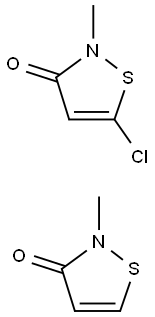
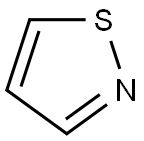
![Isothiazolo[5,4-b]pyridin-3-amine](https://img.chemicalbook.in/CAS/GIF/56891-64-6.gif)

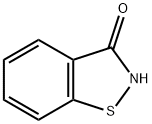
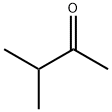
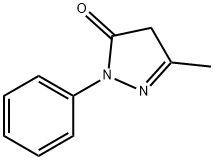

You may like
-
 METHYLISOTHIAZOLINONE 99%View Details
METHYLISOTHIAZOLINONE 99%View Details -
 2682-20-4 98%View Details
2682-20-4 98%View Details
2682-20-4 -
 2682-20-4 98%View Details
2682-20-4 98%View Details
2682-20-4 -
 2682-20-4 2-Methyl-4-isothiazolin-3-one 98%View Details
2682-20-4 2-Methyl-4-isothiazolin-3-one 98%View Details
2682-20-4 -
 Methylisothiazolinone 95% (GC) CAS 2682-20-4View Details
Methylisothiazolinone 95% (GC) CAS 2682-20-4View Details
2682-20-4 -
 2-Methyl-4-isothiazolin-3-one CAS 2682-20-4View Details
2-Methyl-4-isothiazolin-3-one CAS 2682-20-4View Details
2682-20-4 -
 2-Methyl-4-isothiazolin-3-one CAS 2682-20-4View Details
2-Methyl-4-isothiazolin-3-one CAS 2682-20-4View Details
2682-20-4 -
 20677-73-0 (2,2-diethoxyethyl)methylamine 98%View Details
20677-73-0 (2,2-diethoxyethyl)methylamine 98%View Details
20677-73-0
